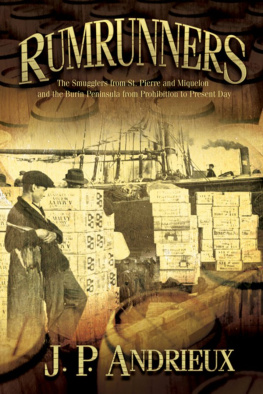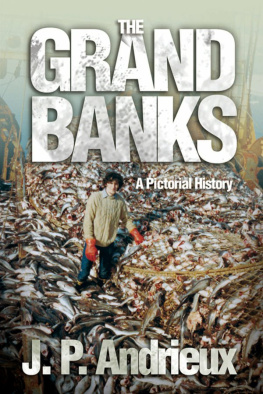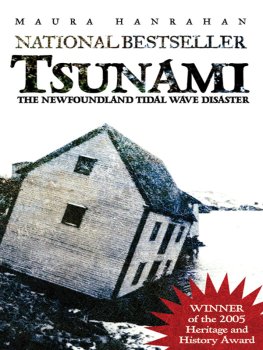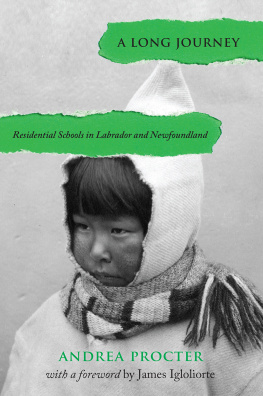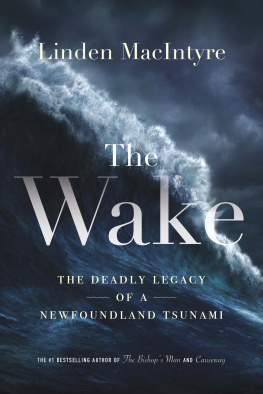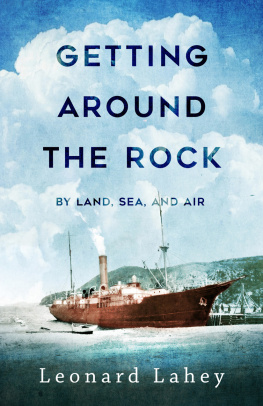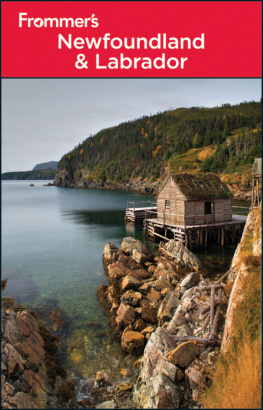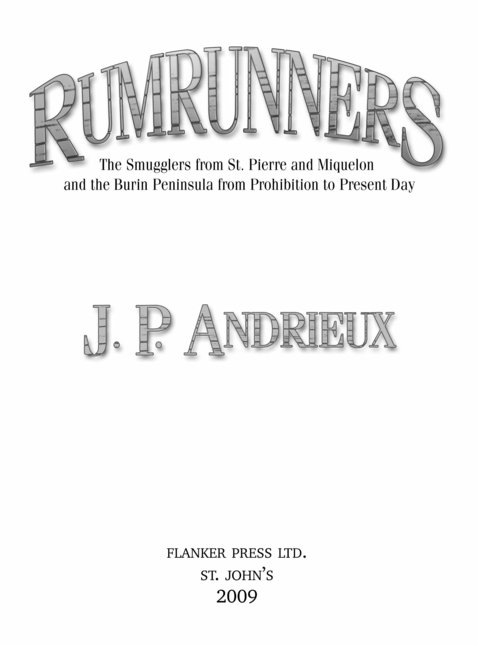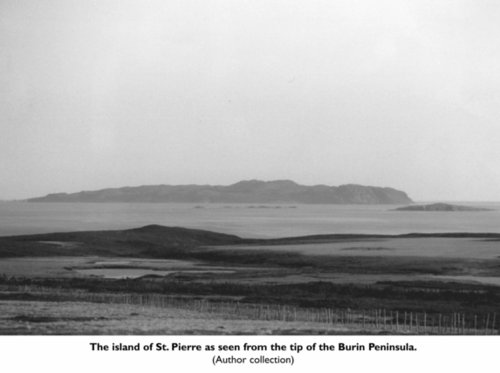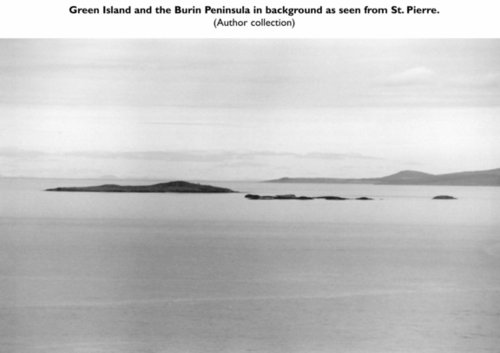Library and Archives Canada Cataloguing in Publication
Andrieux, Jean-Pierre
The rumrunners: from the days of prohibition to
rumrunning on the Burin Peninsula / J. P. Andrieux.
Includes bibliographical references and index.
ISBN
ISBN EPUB 978-1-771170-57-4
ISBN KINDLE 978-1-771170-58-1
1. Smuggling--Saint Pierre and Miquelon--History--20th century. 2. Smuggling--Newfoundland and Labrador--Burin Peninsula--History--20th century. 3. Prohibition--United States--History--20th century. 4. Saint Pierre and Miquelon--History--20th century. 5. Burin Peninsula (N. L.)--History--20th century. I. Title.
HV5091.S24A5342009 364.1'33 C2009-904639-3
2009 by J. P. Andrieux
ALL RIGHTS RESERVED. No part of the work covered by the copyright hereon may be reproduced or used in any form or by any meansgraphic, electronic or mechanicalwithout the written permission of the publisher. Any request for photocopying, recording, taping or information storage and retrieval systems of any part of this book shall be directed to Access Copyright, The Canadian Copyright Licensing Agency, 1 Yonge Street, Suite 800, Toronto, ON M5E 1E5. This applies to classroom use as well.
COVER DESIGN: ADAM FREAKE
Flanker Press Limited
POBox2522,StationC St. Johns, NL Canada
Toll Free: 1-866-739-4420 www.flankerpress.com
16 15 14 13 12 1 2 3 4 5 6 7 8
We acknowledge the financial support of the Government of Canada through the Book Publishing Industry Development Program (BPIDP) for our publishing activities; the Canada Council for the Arts which last year invested $24.3 million in writing and publishing throughout Canada; the Government of Newfoundland and Labrador, Department of Tourism, Culture and Recreation.
Dedicated to
Bill McCoy, also known as the Real McCoy,
premier rumrunner of the American Prohibition era
Also by J. P. Andrieux
Marine Disasters and Shipwrecks: Volume I
INTRODUCTION
The Bahamas, Bermuda, Belize (formerly British Honduras), and St. Pierre and Miquelon had a great deal in common during the era of Prohibition, when they were offshore bases in strategic positions as distribution centres for the liquor trade to the United States.
As well as acting as a huge warehouse for alcohol from Europe, St. Pierres convenient location just off Canada and its close proximity to the U. S. made it a haven for Canadian distributors to set up operations to service their American clients.
The Americans were chiefly interested in rye and bourbon whiskies, and Canadian distillers were anxious to fill a void caused by the Eighteenth Amendment of the U. S. Constitution. This prohibited the distillation and consumption of alcohol in the U. S. Distillers could now supply from their offshore bases.
As a result, St. Pierre became one of the chief liquor supply sources for dry America during the period.
After a postwar period of cross-border smuggling, the Canadian Government, bowing to pressures from the United States Government, amended the Canada Export Act, which among other things forced Canadian distillers to export their liquor to a country that wasnt under prohibition and to put up a bond that could only be refunded once a bona fide landing certificate, proving the goods had been landed, was stamped by customs officials. As a result, the traffic in St. Pierre boomed.
During that period, local laws also made Canada dry. St. Pierre was also the supply base for alcohol that would end up in Quebec, New Brunswick, Prince Edward Island, Nova Scotia, and Newfoundland.
The traffic to the U. S. stopped with the Twenty-First Amendment, known as repeal, in 1933. It lasted to a much lesser degree in the Canadian/Newfoundland areas until the beginning of hostilities of World War II stopped it. The Newfoundland traffic in effect always continued, even after Confederation in 1949, in small proportions due to the proximity of St. Pierre to the Newfoundland coast, a mere twelve miles away.
In 1988, the lone Royal Canadian Mounted Police patrol vessel based on the Burin Peninsula was removed. In effect, it gave the rumrunners from the area carte blanche to smuggle liquor and tobacco into Newfoundland. The trade was now wide open and the volume of goods that entered Newfoundland resembled a smaller version of Prohibition.
This book, with an abundance of photographs, is divided into two sections, one covering the American Prohibition era and afterward, and the Newfoundland trade that has always existed, up to the Terrenceville raids when proceeds of crime legislation was used to bring to an end, or near-end, to the rumrunning tradition and tobacco smuggling between St. Pierre and Miquelon and Newfoundland.
PROHIBITION SETS THE STAGE
Alcoholic beverages have always played a well-defined role in the social life of Canada and the United States. Strong drink has been the target of countless denunciations, the subject of sermons without number, and the whipping boy of tract publishers and book writers. Nonetheless, distilled beverages have all the while been commonplace, and even indispensable ingredients of such diverse human undertakings in North America as barn-raising bees, harvesting, socializing and to celebrate the successful conclusion of business deals. As well, whisky and brandy, in particular, have long had medicinal properties attributed to them, and they are still prescribed as such today.
The distillation of whisky started in Pennsylvania in 1760. Thirty-four years later, when the federal government placed a tax of $0.09 a gallon on all distilled spirits, it resulted in the Whisky Insurrection of 1794.
As always, there were those who opposed the use of intoxicating liquor. By 1800, they were becoming a factor of some importance.
PROHIBITION
The first formal Temperance Society in the world was organized in Moreau, New York, in 1808. It was called the Union Temperance Society of Moreau. It lasted a few years, and though it was relatively unsuccessful, it encouraged other reform movements. Several other societies sprang up in various states. During the next decade, mostly to promote moderation rather than total abstinence, they had a short life and did little to improve conditions.
Drinking created many nuisances. Early laws were not against the use of intoxicants but against their misuse.
Efforts of New England preachers including Reverend Lyman Beecher, father of Harriet Beecher Stowe, succeeded in revitalizing the Temperance Movement in 1826. Beechers sermons on the subject carried wide circulation and their influence was great. As a result, Temperance Societies mushroomed and resulted in formation of the American Temperance Union, grouping some 8,000 societies, most of which had some affiliation with the national organization. Several members of Congress joined it, giving it far greater prestige. Temperance finally became a religious issue. The movement grew and with it the advocation of total abstinence.
Various cities, of which Portland, Maine, was the first major one, managed to pass local option laws preventing the sale of liquor. In 1847, the U. S. Supreme Court ruled that the state had full power to regulate or prohibit the sale of intoxicating liquor. This gave great impetus to movements for statewide prohibition.

